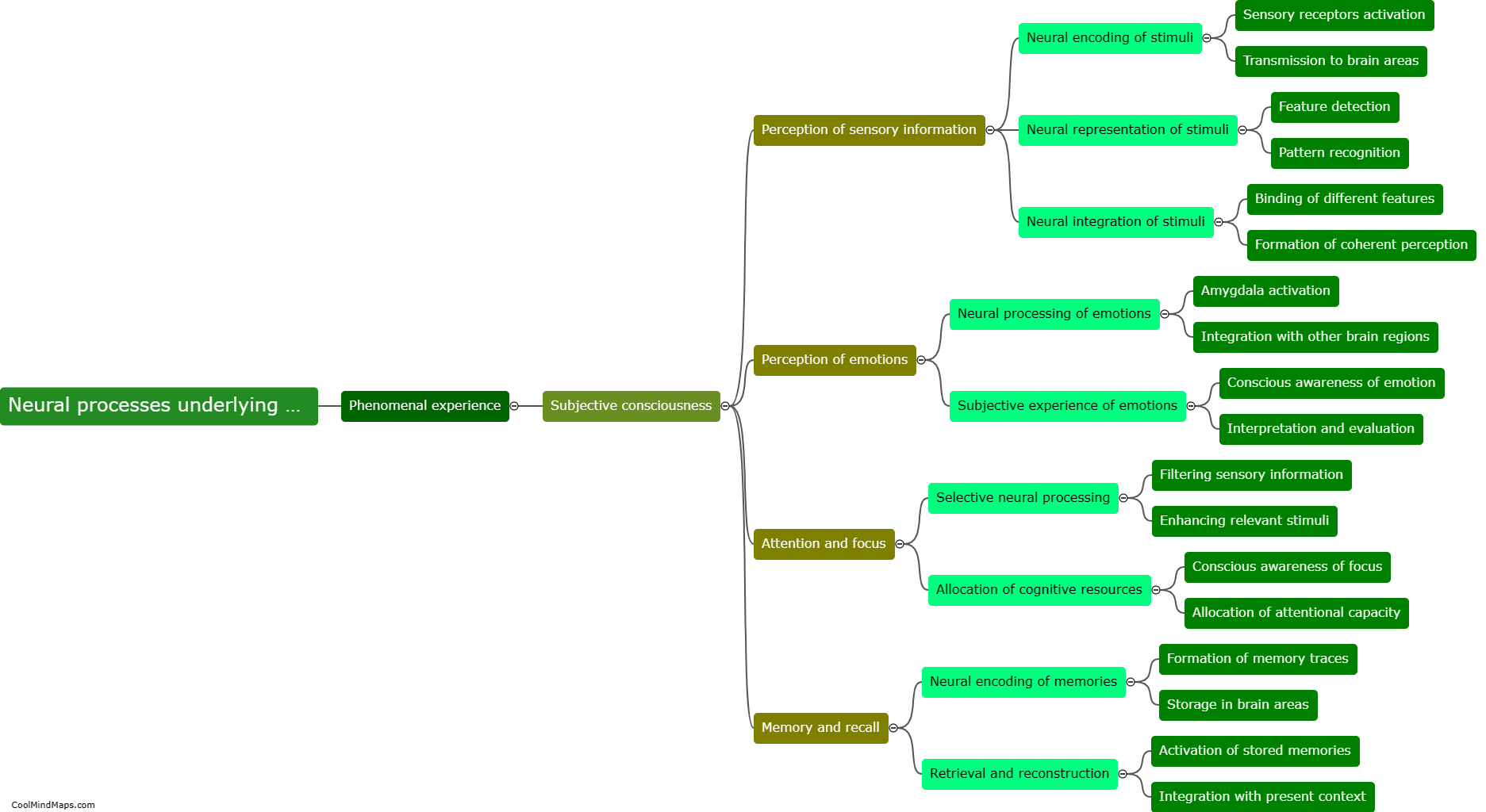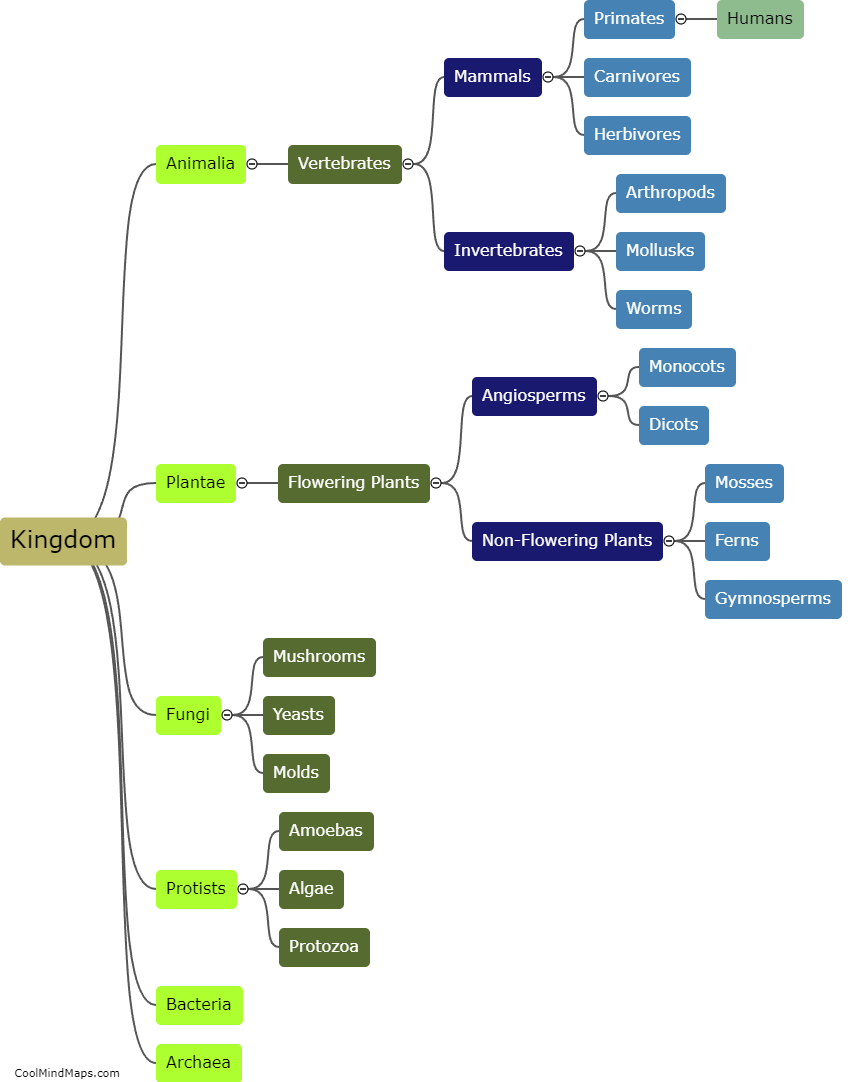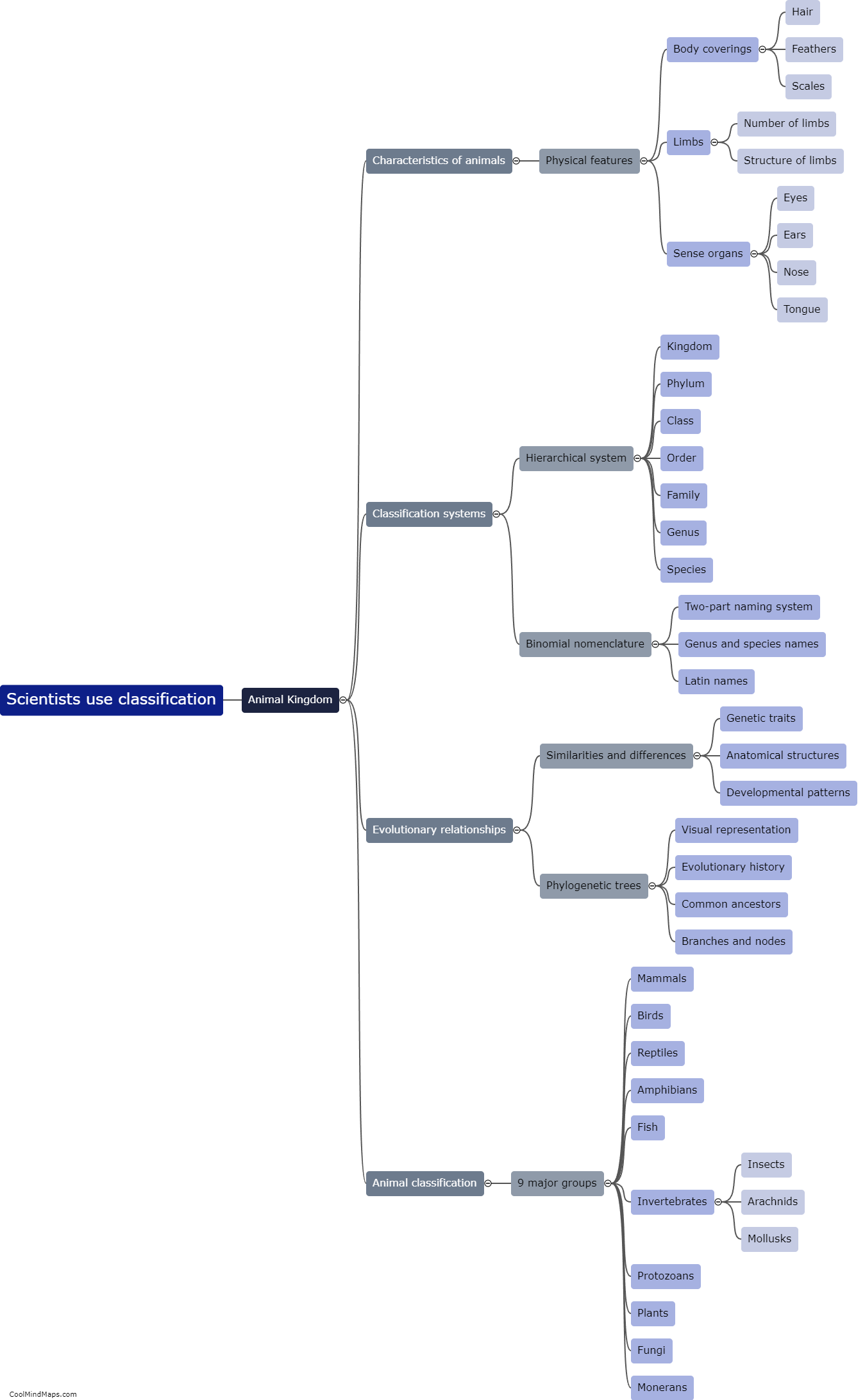What are the different types of taxa in taxonomy?
Taxonomy is the science of classifying and categorizing organisms based on their characteristics and evolutionary relationships. Within taxonomy, taxa are the different named groups or categories that organisms are assigned to. The hierarchical classification system organized by taxa includes several levels, ranging from broad to specific. The main taxa in taxonomy, in descending order of inclusiveness, are domain, kingdom, phylum, class, order, family, genus, and species. Each taxa represents a distinct level of classification, with domains being the highest and species being the most specific. The different taxa help scientists organize and understand the diversity of life on Earth, providing a systematic way to categorize organisms based on their shared characteristics.

This mind map was published on 26 October 2023 and has been viewed 76 times.











